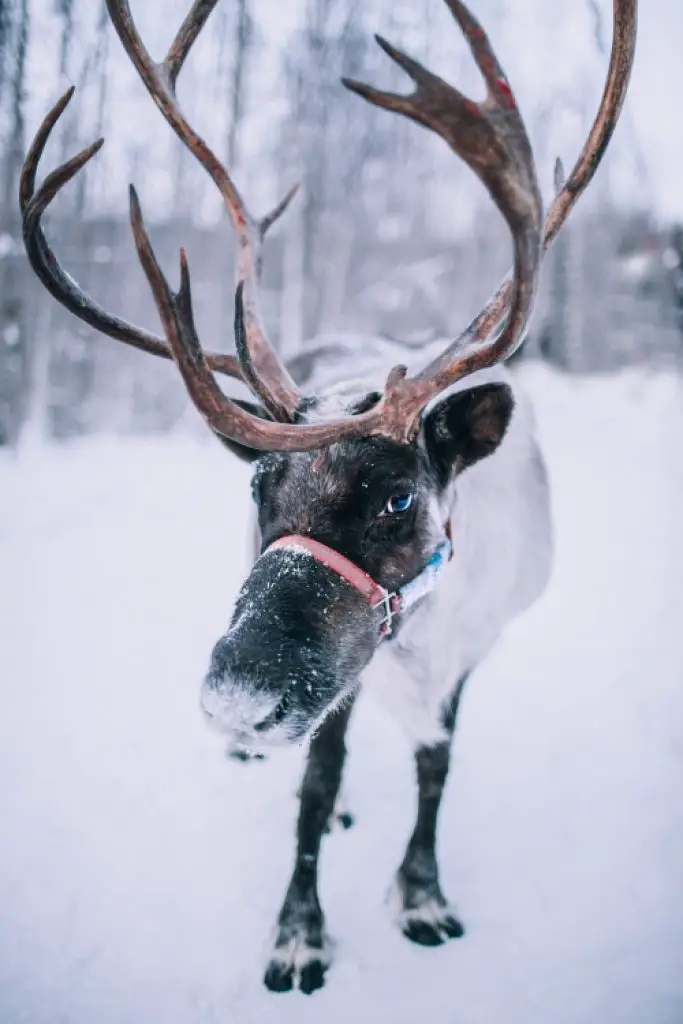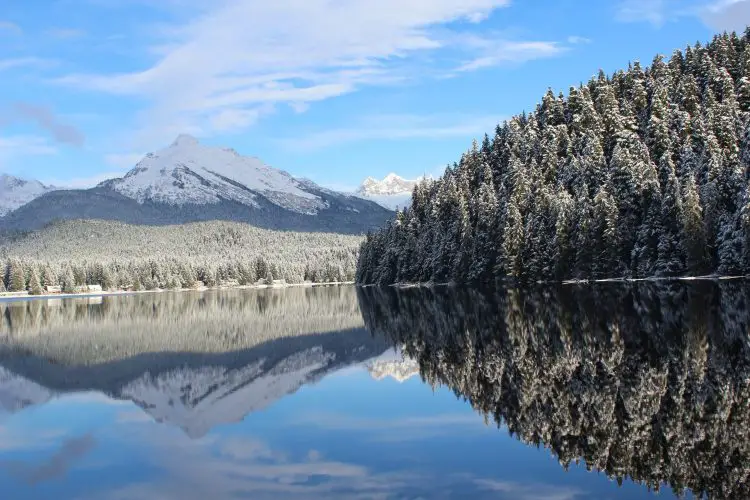Despite Texas being the second largest state in the United States, and larger than most countries, Alaska is more than double the size of the Lone Star state. The entire population of Earth would be able to live in Alaska with a density similar to that of Washington, D.C.
HOW BIG IS ALASKA?
Alaska, the great state of gorgeous national parks and vast wilderness thriving with wildlife was inducted as the 49th state on January 3, 1959. It is home to an incredible array of wildlife and scenic nature.

The Alaska Peninsula is the most extensive strip of land in the Western Hemisphere. It is situated in the far northwestern part of North America. Alaska’s western section is in the Eastern Hemisphere as the 180th meridian goes across the Aleutian Islands. Alaska is geographically located in the two hemispheres.
Alaska is a massive state with a wide variety of physical qualities. Besides its mainland peninsula, the region has around 15,000 square miles of valleys and conduits and roughly around 34,000 miles of curved coastal shoreline. Moreover, Alaska’s coastline makes up the majority of the coastal waters of the United States.
With 6,640 miles of shoreline, Alaska has more than any other state in the United States. It also boasts approximately 46,000 kilometers of coastline to explore. All of this provides a habitat for aquatic life to live and flourish.
It is the home of Denali (Mount McKinley), considered the tallest mountain in North America at 20,310 feet. Approximately one-third of Alaska is included in the Arctic Circle, and permafrost covers roughly four-fifths of the state.
It hosts excellent national parks and wildlife conservation areas. The beautiful Wrangell-St covers over 13.2 million acres of land. Elias National Park and Preserve. There lies an incredible scenery with glaciers and volcanoes.
With 8.5 million acres, Gates of the Arctic National Park and Preserve ranks second. Katmai National Park and Preserve and Glacier Bay National Park and Preserve are two more major national parks in Alaska.
In these parks lie almost three million lakes; Lake Iliamna, the largest of them, comes in eighth place in terms of size in the United States by area and is home to a diversity of aquatic species. Aside from that, it has approximately 12,000 rivers.
One example is the Yukon River, which extends 2,060 kilometers, and is the longest of these rivers. Native Alaskans utilized the rivers in interior Alaska for transit in summer and winter. It offered a substantial food supply for those who lived beside the riverbanks.
Alaska is also the home of the most number of volcanoes in the United States. Over 130 volcanoes exist in Alaska; 50 have erupted since approximately 1760. These volcanoes account for over 75% of all volcanic activity in the United States within the last 200 years. Historically, volcanic ash has created significant problems with flights and oil production, resulting in the loss of millions of dollars.
Alaska expanded the border between the United States by approximately one-fifth once it became a state. The new area had large tracts of undeveloped terrain and untouched riches.
Alaska’s colonization and utilization have been hampered by its remote location out from the majority of the country, as well as natural and environmental barriers to transit and connections; it remains the country’s final frontier. The Greater Anchorage–Kenai Peninsula region is home to almost fifty percent of Alaska’s population.
HOW BIG IS ALASKA COMPARED TO TEXAS?
Alaska is known as the largest state in the United States of America. It encompasses 663,267 square miles of bountiful land that has yielded billions of monetary gains in fur, gold, oil, and wood. Its seas have provided an array of creatures.
Alaska is untamed, peaceful, and full of potential. The attraction that grabs the attention of its visitors is the vast terrain itself. Turquoise glaciers, many lakes, and rivers are thriving with fish, hot volcanoes, towering mountains, and massive valleys occupied by bears, moose, and other fauna.

Alaska is more prominent than Texas, the second-biggest state measuring 268,581 square miles. “If you chopped Alaska in two, Texas would be the third biggest state in the Country!” is one of Alaskans’ favorite sayings.
Texas does not compare to Alaska in terms of size. Alaska has a vast territory two and a half times that of Texas.
Alaska is also 1.9 times substantially greater in height and 3.1 times more expansive compared to Texas. However, Texas’ grandeur is worth addressing because it is the second-largest state in the United States. Texas is also larger than Germany and France when compared to other nations.
HOW BIG IS ALASKA COMPARED TO EUROPE?
Europe is 3,837,081 square miles in size, whereas Alaska is 663,268 square miles in measurement. This state is around one-sixth of Europe’s size. It’s not quite Europe’s size, but it is still considered significant for one state.
Alaska is roughly the size of Western Europe or Scandinavian countries combined. That would be 28 nations. Alaska outnumbers all but 16 of the world’s 195 countries in the total territory as of 2021. This fact indicates that 178 distinct countries might fit within Alaska alone.
You can fit the whole world’s population in this one state. This would amount to around 11,800 people per square mile, or about the concentration of people of Washington, D.C. For comparison, New York City has a population density of about 27,000 per square mile.
HOW BIG IS FAIRBANKS, ALASKA?
Fairbanks is a self-governing municipality in Alaska that serves as the seat of the Fairbanks North Star Borough. Fairbanks is the biggest city with the lowest temperature in Alaska’s Interior and the state’s second-largest.
Fairbanks is a distinct region that varies substantially from other tourist destinations in Alaska. It is located in Alaska’s core, which means it has an entirely different temperature and weather from the rest of the state.
The city center has a census of 32,515 inhabitants, while the Fairbanks North Star Borough has a community of 95,655 individuals, making it Alaska’s second most populated urbanized district, following Anchorage. The Fairbanks North Star Metropolitan Statistical Area is the topmost Metropolitan Statistical Area in the United States, situated 196 miles south of the Arctic Circle.
Fairbanks, Alaska, welcomes its guests with a small-town charm and frontier culture, ensuring a memorable experience. Fairbanks is Alaska’s second-largest municipality, with a demographic of 32,000 inhabitants and a regional population of about 100,000.
Fairbanks is noted for its top-tier lodgings, restaurants, galleries, events, heritage landmarks, Alaska Native traditions, and exposure to the Alaskan wilderness. The city offers everything you can desire with fast-food franchises, plenty of places to eat and drink, and activities to do.
However, the nature around the location offers so much more, making it a memorable experience.
The midnight sun, commonly known as the Aurora Borealis, is among the most significant reasons for travelers coming to Fairbanks. The aurora period runs from the months of August to April, and the midnight sun lasts from April to August.
It’s also famed for its prolonged summer days, with the sun appearing never to rest. Fairbanks has over 21 hours of daylight during the month of June. In the winter, however, it is the opposite with exceptionally extended dark hours. There will be less than 4 hours of sunlight in the month of December.
Read More: Skydiving Weight and Age Limits (How Safe Is It?)
HISTORY OF ALASKA
The term “Alaska” was first used to identify the Alaska Peninsula during the Russian colonial times. It comes from the Aleut term “alaxsxaq,” which denotes “the mainland” or, more precisely, “the thing to where the sea’s motion is driven.” It’s also known as “Alyeska,” an Aleut term that means “great land.”
Countless generations before Europeans arrived, Alaska was home to a diverse group of indigenous tribes. Lexical and DNA research conducted here has presented proof for the colonization of North America over the Bering land bridge.
The remnants of a six-week-old child were unearthed at the Upward Sun River excavation in Alaska’s Tanana Valley. The child’s DNA revealed that she came from a distinct genetic community from other indigenous tribes in the New World by the last stages of the Pleistocene. Countless indigenous tribes live and thrive in Alaska to this day.
In 1867, William H. Seward, the 24th United States Secretary of State, arranged the $7.2 million Alaska Purchase with the Russians. Tsar Alexander II, known as the emperor of the Russian Empire at that time, was also involved in the transaction, which took place on March 30, 1867.
After six months, the commissioners arrived in Sitka and negotiated the formal handover. The official raising f the flag took place on October 18, 1867, at Fort Sitka. Two hundred fifty dressed U.S. troops walked to the governor’s home on “Castle Hill” for the event, which has seen Russian forces drop the Russian flag and hoist U.S. flags. Alaska Day, a national holiday on October 18, commemorates this ceremony.
Early in his legislative career, James Wickersham championed the idea of statehood for Alaska. After a territorial vote in 1946, the statehood campaign acquired serious traction years later. Alaska’s Statehood Committee and Constitutional Convention would be formed soon after.
Constitutional proponents also found themselves in significant political confrontations, primarily in the United States. Alaska, as well as Congress. The United States approved statehood. Alaska was declared a part of the United States on January 3, 1959, after being declared by Congress on July 7, 1958.
Sources:
- What Size is Regular Printer Paper? Quick Guide for Paper Dimensions - June 18, 2023
- What Size is My Monitor: A Comprehensive Guide - June 18, 2023
- How Big is Italy Compared to the US? A Concise Comparison - June 16, 2023

